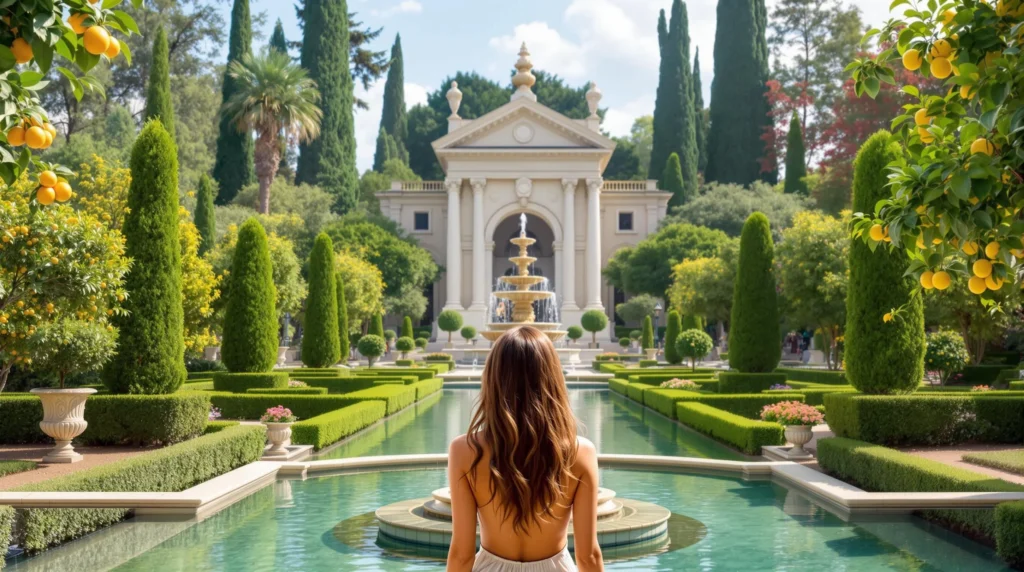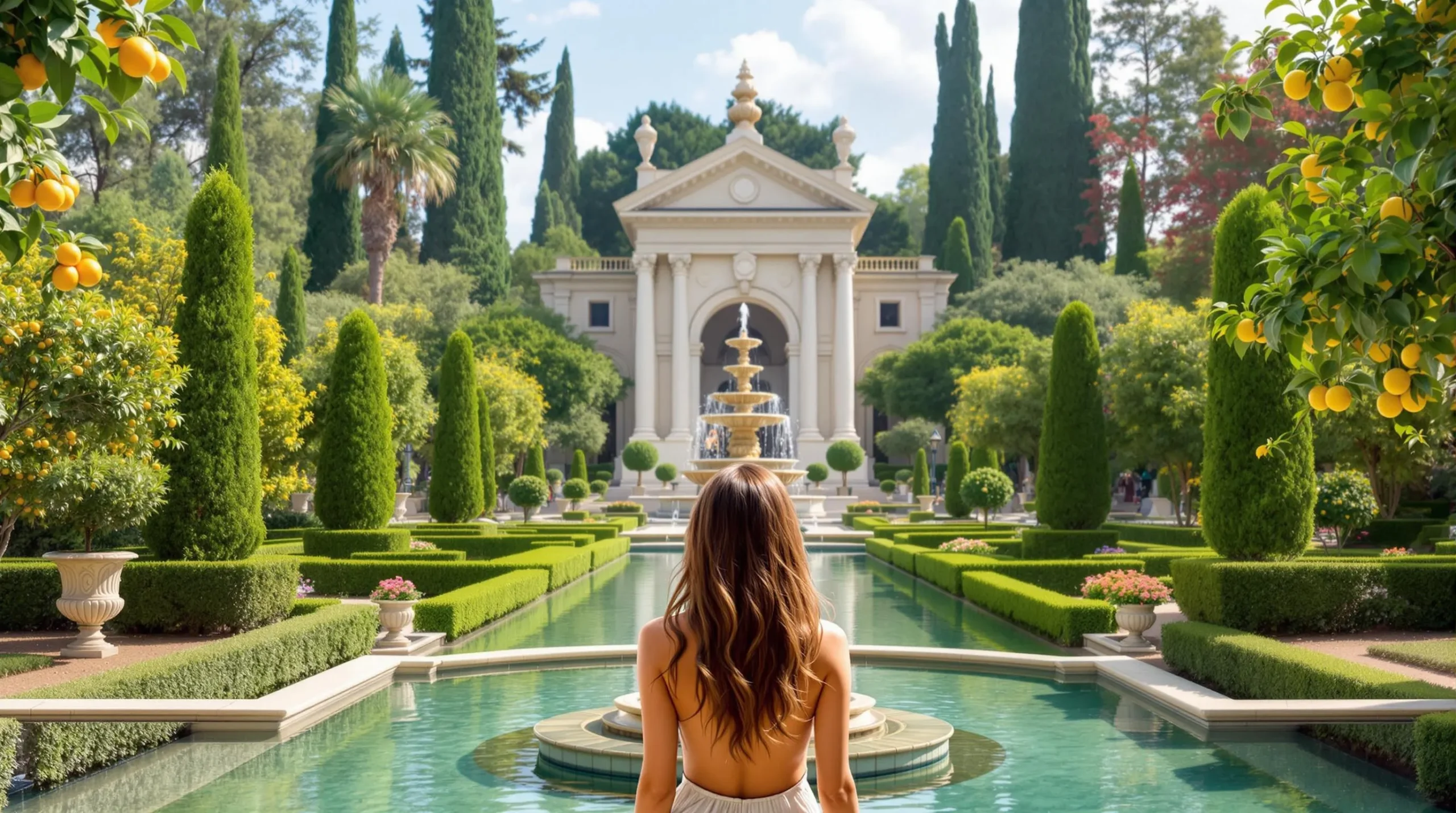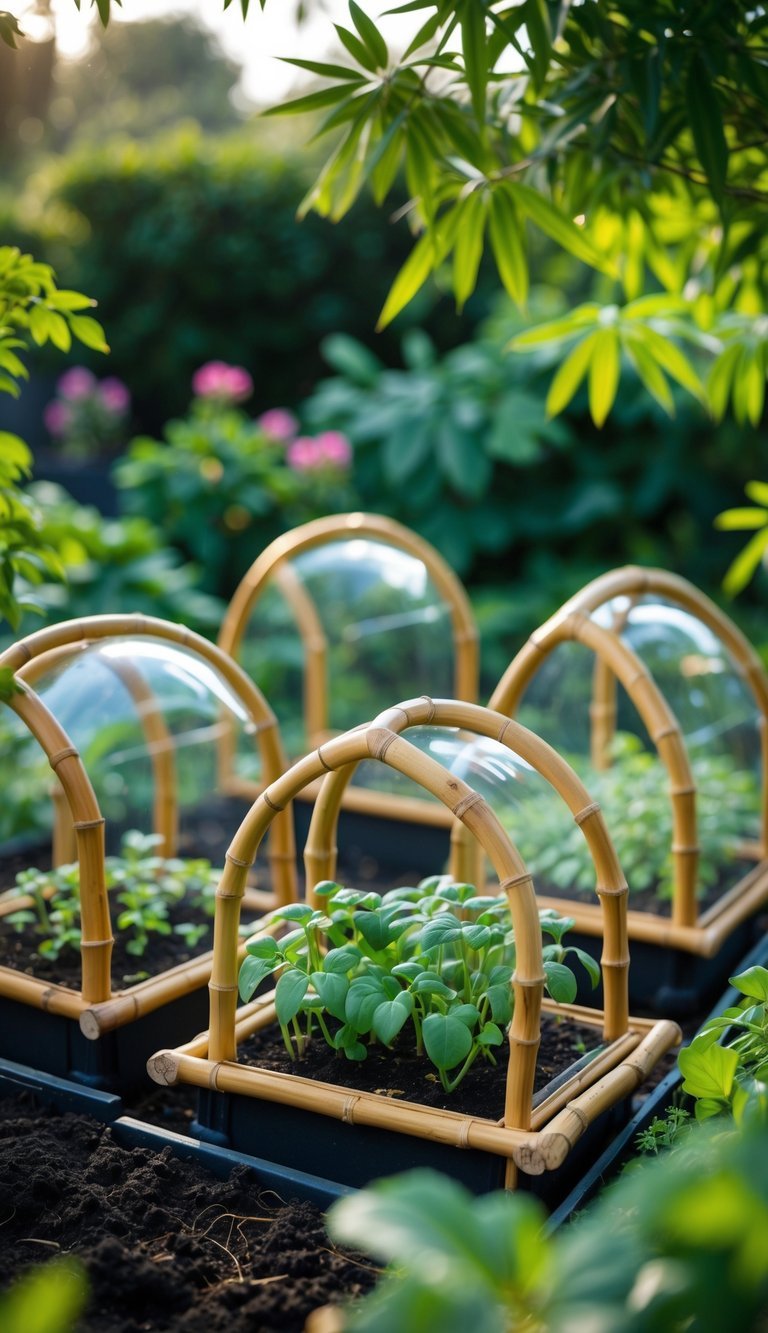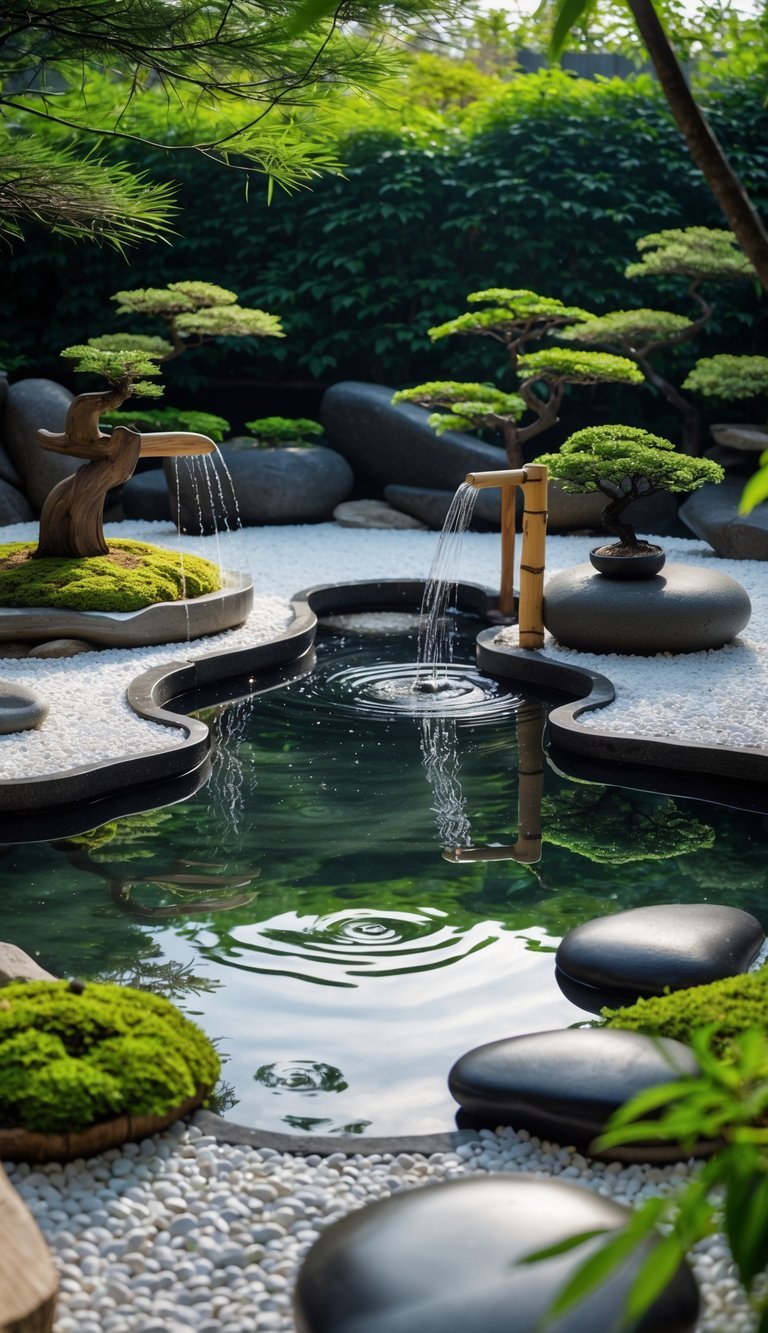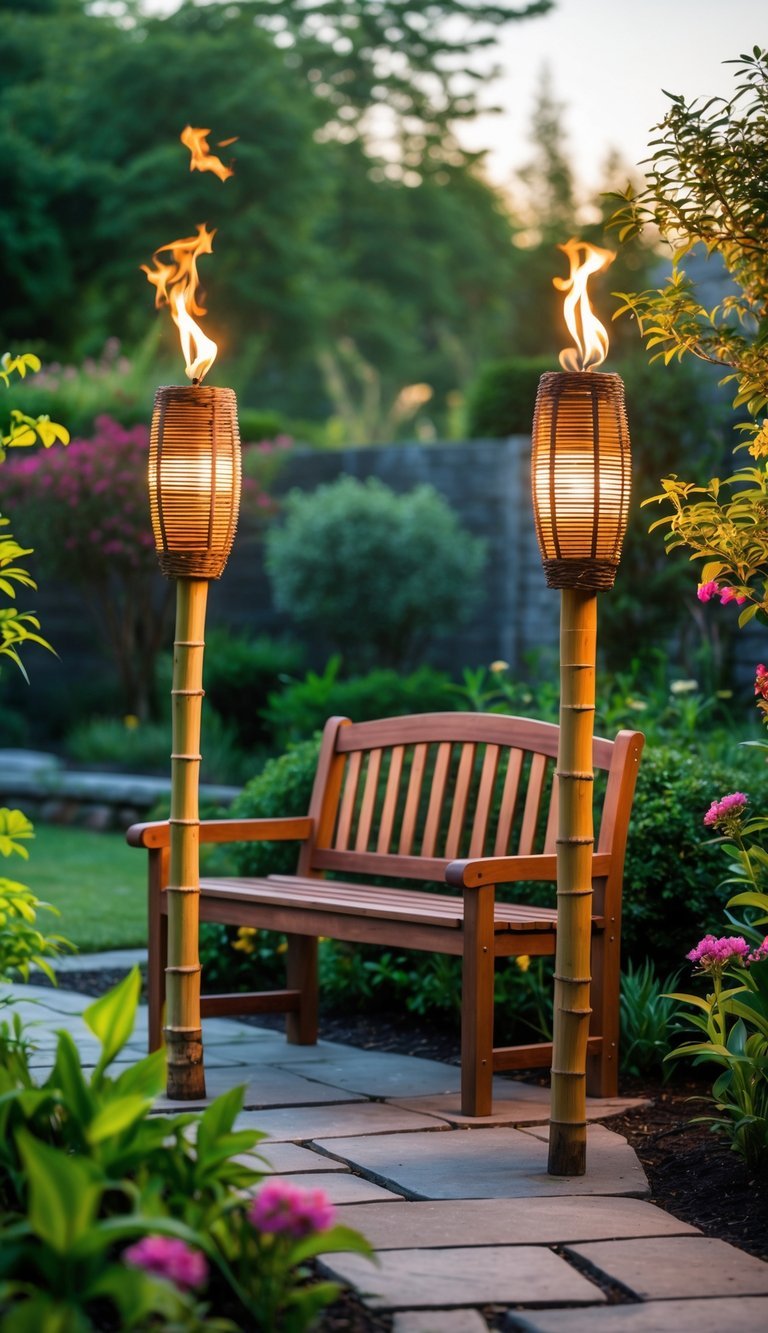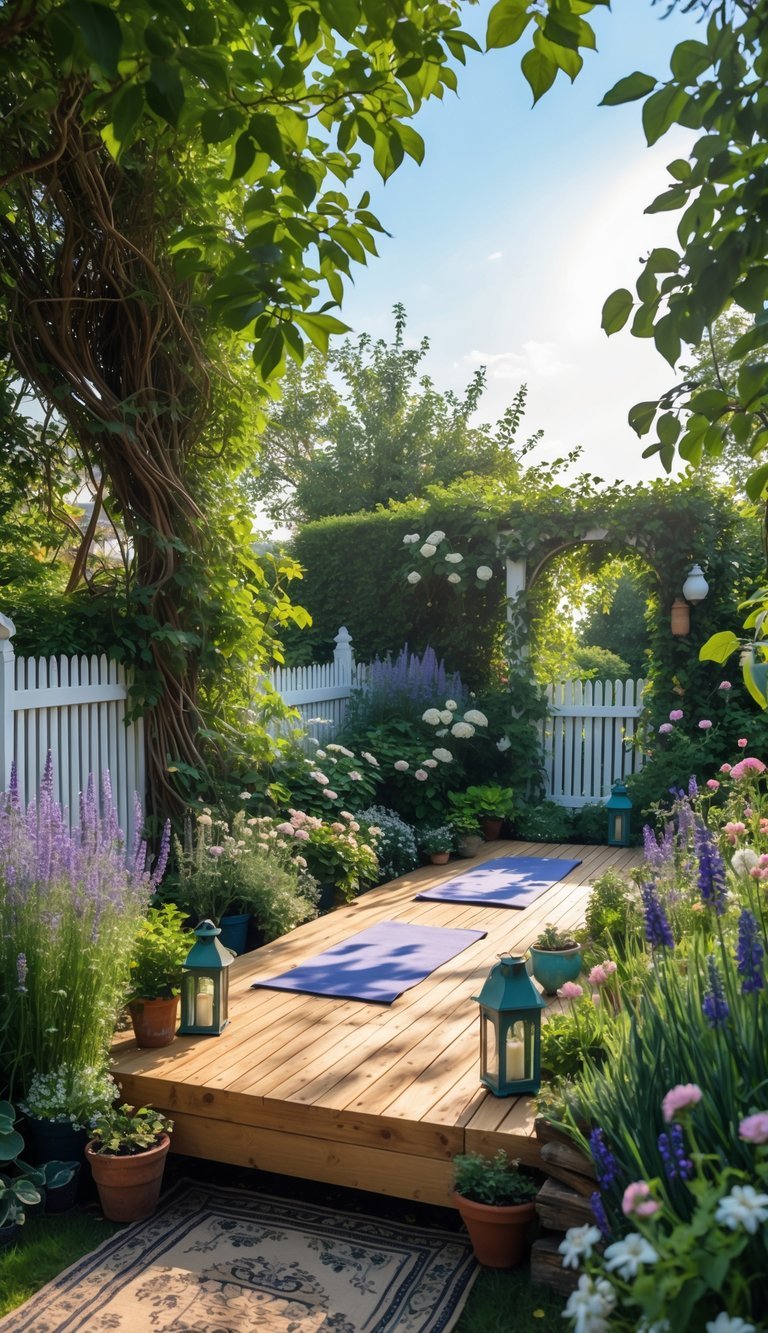The Rich History of Italian Garden Design
Italian garden design stands as one of the Renaissance’s most enduring legacies alongside architecture, painting, and sculpture. These masterful outdoor spaces represent centuries of artistic evolution and cultural expression through the careful arrangement of nature.
Renaissance Origins and Influences
Renaissance garden design flourished during the 15th and 16th centuries, radiating outward from Florence to Rome and eventually influencing the royal domains of Mantua, Ferrara, and Venice. The revival of classical antiquity profoundly shaped these spaces as wealthy merchants and aristocrats constructed rural villas inspired by rediscovered ancient texts and a renewed interest in natural sciences. Leon Battista Alberti’s mid-15th century treatise “De re Aedificatoria” established essential principles for villa construction, emphasizing that these estates should serve as places of both pleasure and practical use.
Italian Renaissance gardens were designed to delight with harmonious landscapes featuring blooming meadows, sunny expanses, shady groves, and clear water features that complemented the natural surroundings. These gardens weren’t merely decorative—they functioned as agricultural centers providing sustenance and income while offering spaces for the leisurely enjoyment of nature. Villa gardens represented the perfect canvas for blending natural and man-made elements into a balanced new order.
Regional Variations Across Italy
Italian garden design developed distinct regional characteristics across different parts of the country, reflecting the diversity of Italy’s landscapes and cultural influences. Northern Italian gardens, particularly those in the wetlands of Piedmont, adapted to accommodate the region’s abundant water resources and cooler climate. These gardens often featured elaborate water systems and lush vegetation suited to the moisture-rich environment.
Tuscan gardens, nestled among gentle hills, embraced terraced designs that worked with the undulating industry rather than against it. These gardens masterfully incorporated olive groves and vineyards as both productive and aesthetic elements. Along the Riviera, gardens took advantage of the mild Mediterranean climate to showcase exotic plants and dramatic seaside views with stepped terraces cascading toward the coast.
Southern Italian gardens responded to the sunny, arid climate with designs that provided ample shade and efficient water management. These gardens often featured citrus groves, palm trees, and drought-resistant Mediterranean plants arranged to create cool retreats from the intense summer heat. Each regional variation maintained core Italian design principles while adapting to local conditions, resulting in a rich tapestry of garden styles across the peninsula.
Key Elements of Italian Garden Design
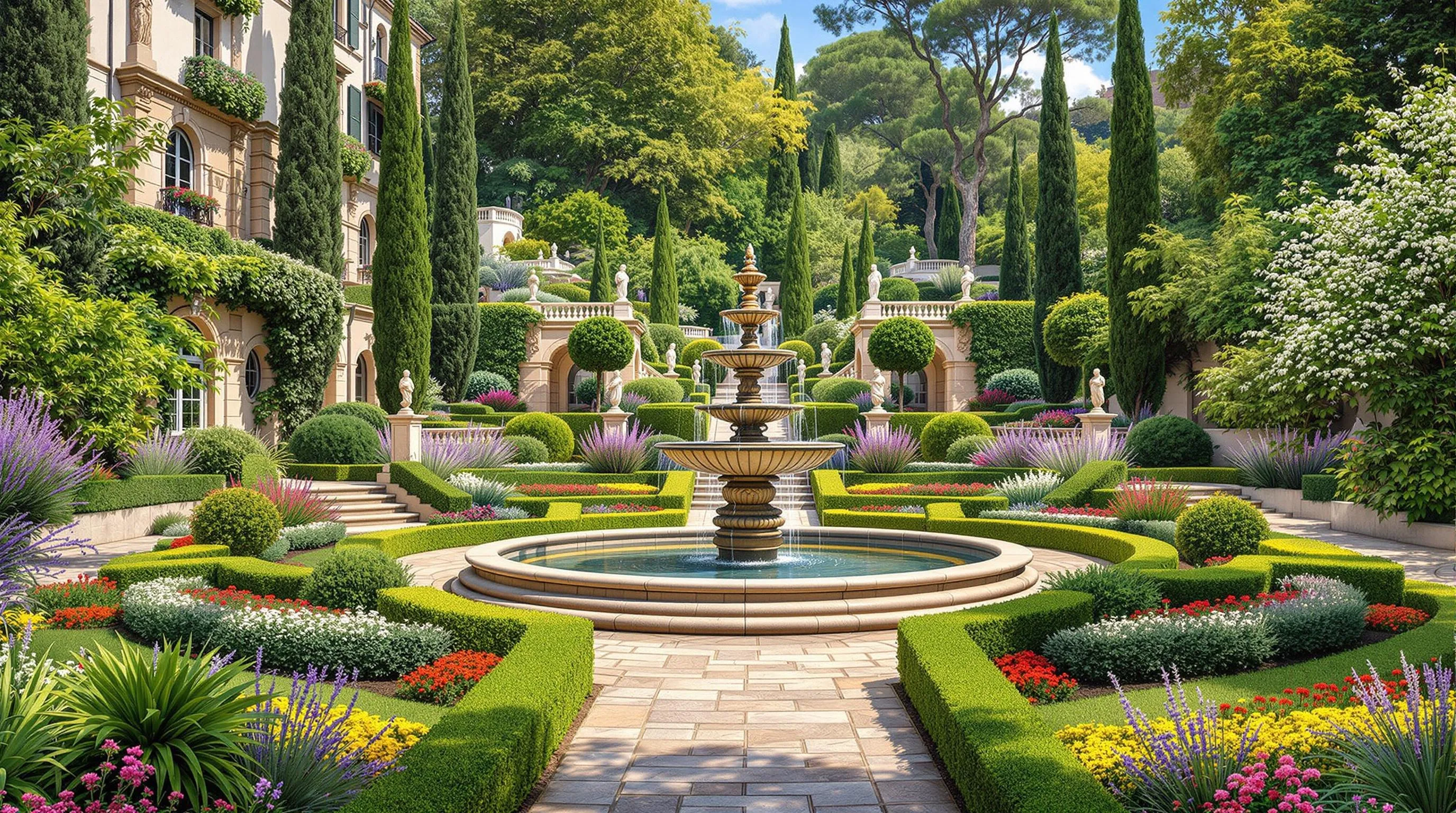
Italian garden design blends architecture and nature through formal arrangements that create harmonious outdoor spaces. Originating in ancient Rome and reaching its zenith during the Renaissance period, these gardens showcase distinctive elements that have influenced industry design worldwide.
Symmetry and Formal Structure
Symmetry forms the cornerstone of Italian garden design, with precise geometric patterns creating visual balance and harmony. Gardens feature meticulously aligned pathways, hedges, and flower beds arranged in clear geometric shapes—predominantly right angles and rectangles rather than curves. This mathematical precision reflects Renaissance ideals of order and proportion, establishing a sense of control over nature. Pathways typically follow an orthogonal pattern with a main axis leading from the villa’s entrance, intersected by secondary walkways that divide the space into organized sections.
Terracing and Level Changes
Italian gardens masterfully incorporate the natural topography of sloping hills through terraced designs that transform challenging landscapes into stunning features. Multiple tiers replace the enclosed medieval garden style, creating open spaces and strategic vantage points that draw the eye from the villa to the broader industry. Terracing became a standard practice after Bramante introduced it at the Vatican with the thousand-foot Belvedere Court. Open staircases and ramps connect these different levels, while balustrades with urn-shaped supports often form elegant railings along terrace edges, improving both safety and aesthetic appeal.
Water Features and Fountains
Water elements play a central role in Italian garden design, symbolizing purity and adding both visual and auditory dimensions to the space. Stately tiered fountains often serve as focal points, with streams cascading down stacked stone bowls. Reflecting pools, lily ponds, and recirculating waterfalls create tranquil backgrounds for outdoor dining and relaxation. These water features aren’t merely decorative—they served practical irrigation purposes in traditional Italian gardens. Famous gardens like Villa d’Este in Tivoli showcase elaborate waterworks including “trick fountains” that surprise and delight visitors, demonstrating the sophisticated engineering behind these seemingly simple elements.
Statuary and Decorative Elements
Classical statues and ornamental features transform Italian gardens into outdoor galleries that bridge architecture with industry. Ancient urns, replica Roman busts, and weathered stone sculptures create intriguing focal points throughout the garden. Pergolas covered in climbing plants offer shaded walkways while adding vertical interest. Terra cotta pots filled with Mediterranean plants—including cypress, yew, boxwood, and drought-resistant lavender—provide bursts of color and texture. These decorative elements weren’t merely aesthetic choices but demonstrations of wealth and status, with the most luxurious gardens featuring an abundance of artistic details designed to impress visitors as they wandered through carefully orchestrated spaces.
Signature Plants in Italian Gardens
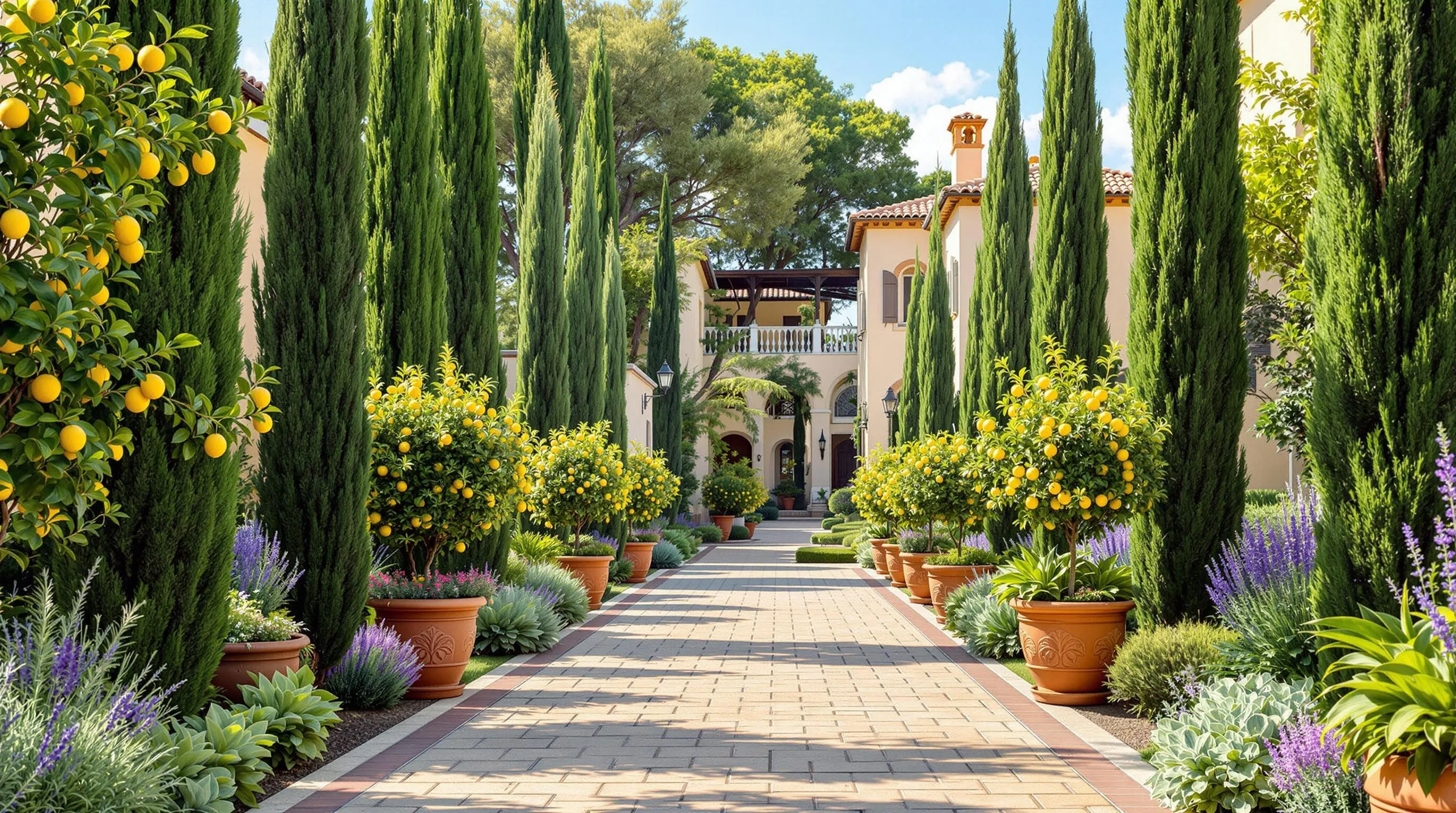
Italian gardens feature distinctive plant selections that create their unmistakable Mediterranean character. These carefully chosen botanical elements complement the structured design principles while adding texture, fragrance, and visual interest.
Cypress and Pine Trees
Italian cypress trees (Cupressus sempervirens) serve as iconic vertical accents in traditional Italian gardens, creating a sense of grandeur and formality. Their tall, slender silhouettes provide dramatic architectural elements that naturally draw the eye upward and frame garden views. You’ll often find these distinctive trees lining pathways, emphasizing entrance points, or standing as sentinels at garden boundaries. Pine trees contribute additional Mediterranean character with their textural canopies, though they take a secondary role to the more prominently featured cypress in classical Italian design schemes.
Citrus and Olive Groves
Citrus trees, particularly lemons (Citrus limon), infuse Italian gardens with refreshing fragrance and visual appeal through their glossy foliage and vibrant fruits. Traditionally planted in terracotta containers that can be moved indoors during colder months, these versatile trees serve as natural accents along pathways or in courtyard settings. Olive trees (Olea europaea) symbolize Mediterranean heritage and connect gardens to Italy’s rich culinary traditions. Their silvery-green foliage provides year-round interest while their gnarled trunks and branches add sculptural elements to the garden industry, creating living reminders of centuries-old agricultural practices.
Mediterranean Herbs and Florals
Aromatic herbs form essential elements in Italian garden designs, adding sensory dimensions through their fragrance and culinary connections. Rosemary (Salvia rosmarinus), lavender (Lavandula spp.), thyme (Thymus vulgaris), and basil (Ocimum basilicum) commonly line pathways or fill dedicated herb gardens within the larger industry. These plantings release delightful scents when brushed against or warmed by the sun. Unlike more flower-focused garden styles, traditional Italian gardens emphasize green foliage over abundant blooms, using herbs strategically to add textural variety and practical value. When flowers appear, they typically complement the overall structured design rather than dominating it, maintaining the emphasis on ordered beauty that characterizes authentic Italian garden spaces.
Creating an Italian Garden at Home
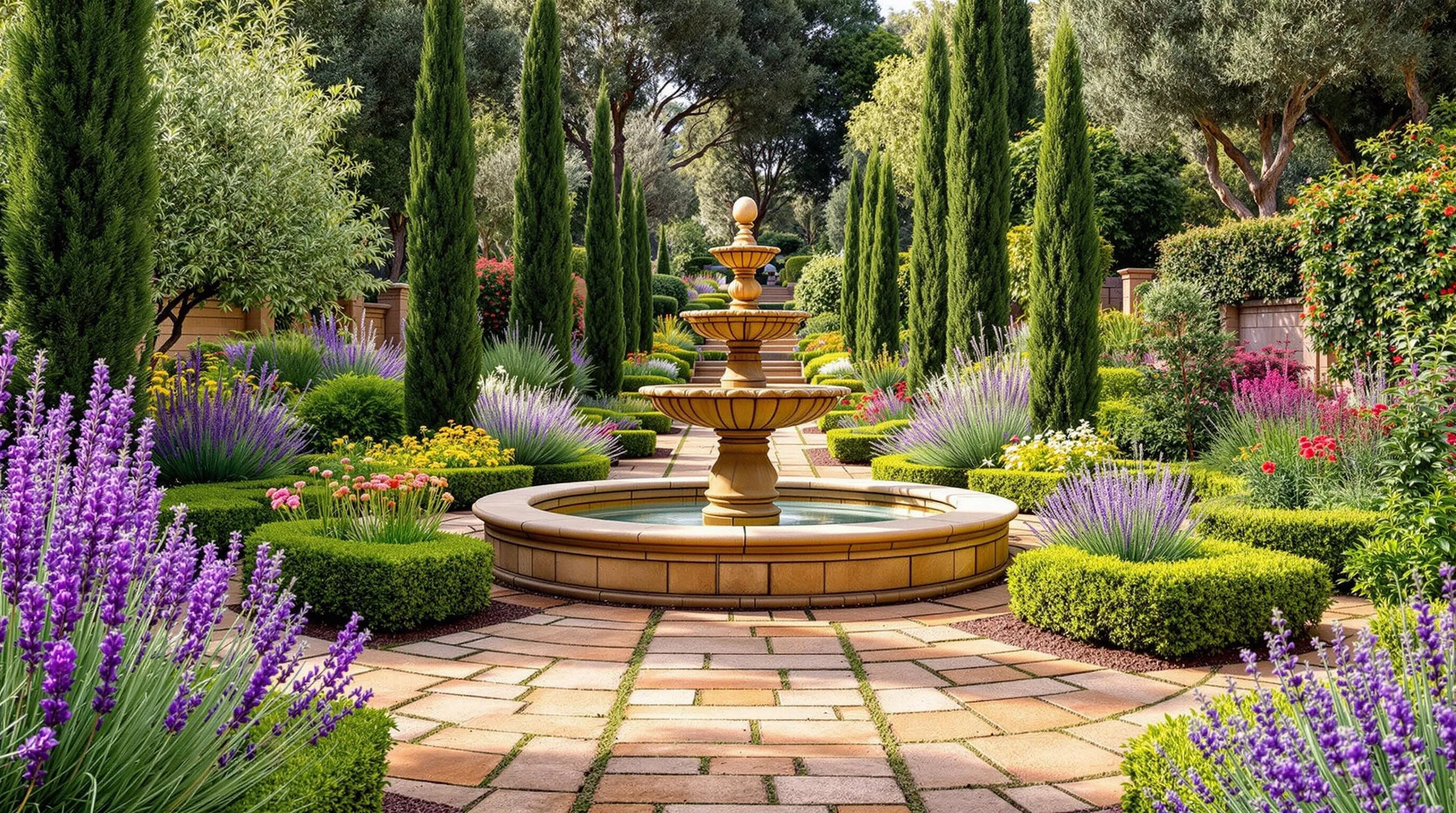
Transform your outdoor space into a Mediterranean paradise by incorporating the timeless elements of Italian garden design. These gardens blend structured elegance with natural beauty to create harmonious outdoor retreats.
Planning Your Layout
Italian gardens showcase symmetry and order through perfectly aligned pathways, hedges, and focal points. Begin by establishing a central axis where elements on either side mirror each other, creating a sense of balance. Design geometric shapes such as rectangles or circles for flowerbeds, pathways, and seating areas to maintain visual harmony. Create mirror-image planting beds on opposite sides of a central walkway or fountain for authentic Italian structure. This mathematical precision forms the foundation of a serene Italian garden experience.
Selecting Appropriate Materials
Architectural elements form the backbone of traditional Italian gardens, integrating structures with plantings. Include pergolas, statues, and colonnades to provide shade and visual interest while creating seamless transitions between your garden and surrounding architecture. Opt for warm, earth-toned stonework in varying hues of gray, terracotta, and red for pathways and walls. Natural flagstones work beautifully, with their imperfections adding to the authentic Mediterranean aesthetic. For a modern interpretation, incorporate clean-lined furniture crafted from metal, wood, or stone that complements the classical design elements.
Drought-Tolerant Plant Selection
Italian gardens thrive in hot, dry climates with plants that can withstand Mediterranean weather conditions:
- Olive Trees (Olea europaea): Add structure, history, and silvery-green foliage that catches the breeze
- Lavender (Lavandula angustifolia): Creates fragrant purple blooms that attract beneficial pollinators
- Rosemary & Sage: Serve dual purposes as both ornamental and culinary herbs
- Agapanthus & Salvias: Provide striking blue and purple flowers that contrast beautifully with evergreen shrubs
- Italian Cypress (Cupressus sempervirens): Offers dramatic vertical accents and traditional Italian silhouettes
- Silver-foliaged plants: Includes lamb’s ears and Russian sage that contrast with deeper green hedging
Additional Features
Water features create the soothing ambiance essential to authentic Italian gardens. Install fountains, reflecting pools, or birdbaths as central focal points that add tranquility and cooling elements. Enhance your garden’s atmosphere with low, soft lighting that accentuates plants, water features, and seating areas. Solar-powered lights or LED strips add modern convenience while maintaining the classic Italian garden feel. Incorporate weathered terracotta containers and urns positioned symmetrically along pathways or at garden entrances to complete your Italian garden transformation.
Modern Interpretations of Italian Garden Style
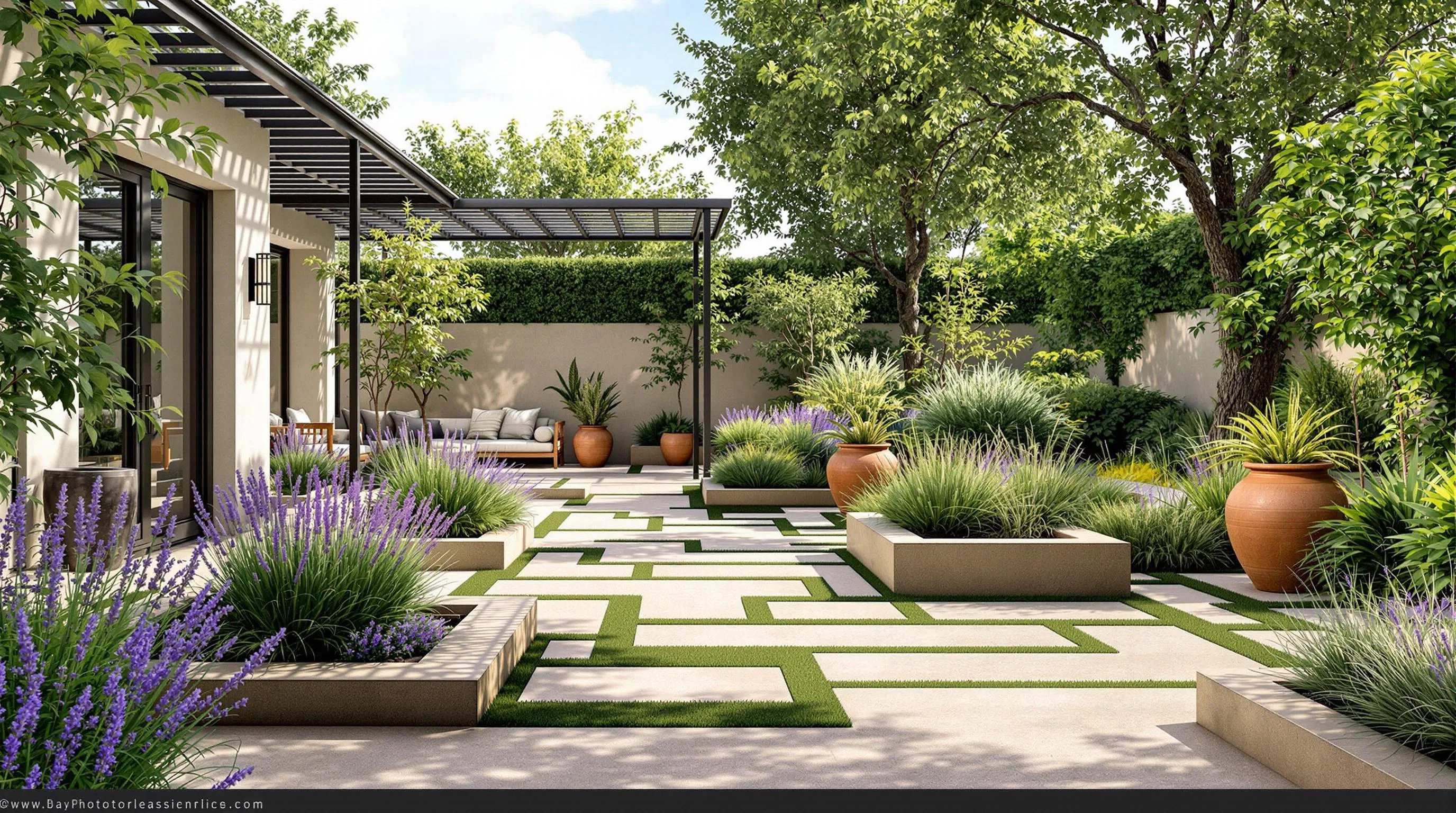
Modern Italian gardens blend classical principles with contemporary aesthetics, creating spaces that honor tradition while embracing innovation. These designs maintain the core elements of symmetry, structure, and formality while introducing fresh perspectives and materials suited to today’s lifestyles.
Small Space Italian Gardens
Italian garden design translates beautifully into compact urban or residential spaces through thoughtful scaling of traditional elements. You can create structured pathways and geometric planting beds within limited areas to achieve the same sense of order and tranquility found in grand Renaissance gardens. Small-scale water features, compact topiaries, and strategically placed classical accents help recreate Italian elegance without requiring expansive grounds. Straight paths or a central axis guide the eye through the space, while clipped hedges define boundaries and create visual interest. Even in the smallest courtyard, precise paving arrangements and carefully positioned focal points maximize spatial impact and maintain the essential character of Italian design.
Sustainable Adaptations
Contemporary Italian gardens embrace environmental consciousness through innovative resource management and thoughtful plant selection. Recirculating water systems in fountains conserve water while maintaining the essential auditory and visual elements of traditional designs. Mediterranean plants like lavender, rosemary, and olive trees thrive with minimal irrigation while contributing seasonal fragrance and texture to the garden. Natural materials such as weathered terracotta and local stone reduce environmental impact while preserving authentic Italian character. Modern designs often incorporate water-efficient features and drought-resistant plantings that respect environmental concerns without sacrificing aesthetic appeal. Metal pergolas and energy-efficient lighting enhance outdoor living spaces while minimizing resource consumption. This fusion of traditional design with sustainable practices creates gardens that honor Italian heritage while addressing modern environmental challenges.
Conclusion
Italian garden design offers a timeless approach to outdoor spaces that balances structure with natural beauty. Whether you’re working with a sprawling estate or a modest patio you can embrace these principles to create your own Mediterranean retreat.
By incorporating symmetrical layouts strategic water features and classic Mediterranean plants you’ll transform your outdoor space into a tranquil haven that connects with centuries of design history. Today’s adaptations make these gardens more sustainable and accessible than ever.
The true magic of Italian gardens lies in their ability to create harmony between human artistry and natural elements. As you design your own Italian-inspired space remember that you’re not just creating a garden but crafting an experience that will bring joy and serenity for years to come.

